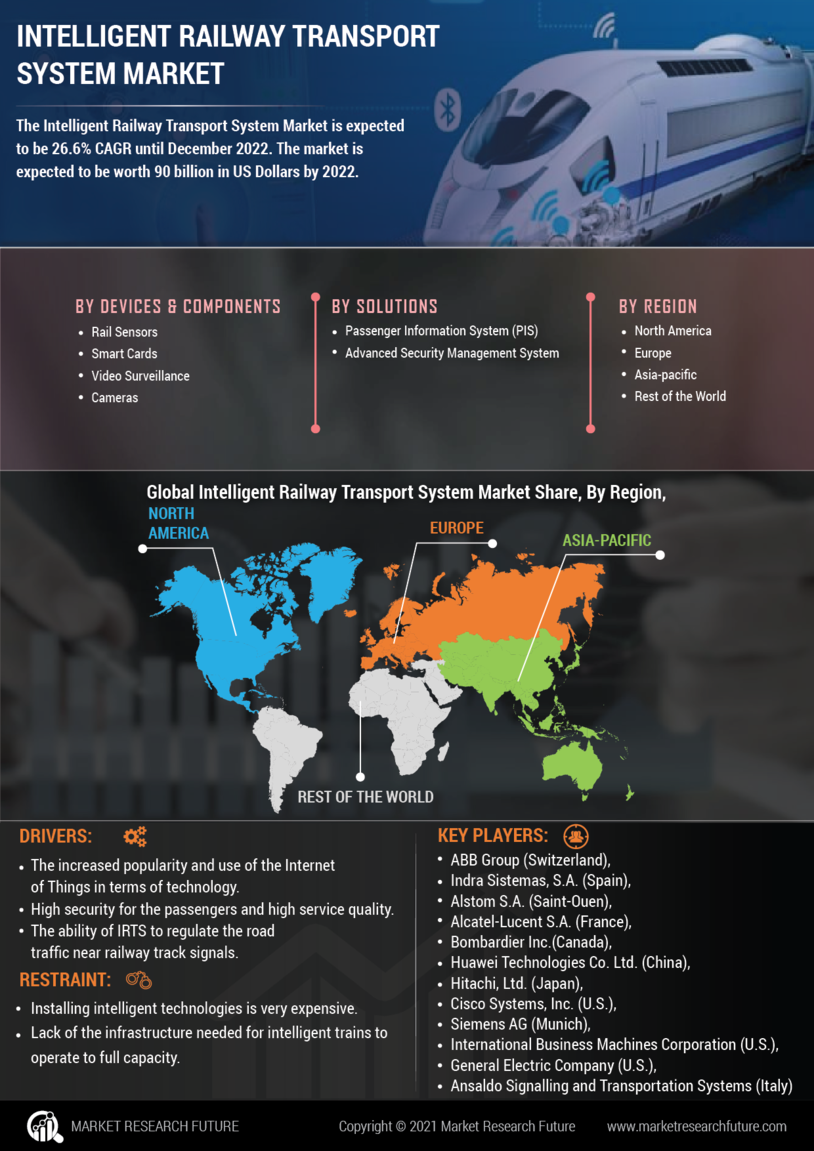Growing Urbanization
Urbanization is a significant driver of the Global Intelligent Railway Transport System Market Industry, as increasing populations in urban areas necessitate efficient public transport solutions. Cities worldwide are adopting intelligent railway systems to alleviate congestion and reduce travel times. For instance, cities like Tokyo and London have integrated smart technologies into their rail networks, enhancing passenger experience through real-time updates and seamless transfers. This trend indicates a shift towards sustainable urban mobility, which is likely to propel the market forward, with a projected CAGR of 32.89% from 2025 to 2035.
Market Growth Projections
The Global Intelligent Railway Transport System Market Industry is poised for remarkable growth, with projections indicating a substantial increase in market value. By 2024, the market is expected to reach 8 USD Billion, with further expansion anticipated as the industry adapts to emerging technologies and evolving consumer demands. The forecasted CAGR of 32.89% from 2025 to 2035 underscores the potential for innovation and investment in intelligent railway systems. This growth trajectory reflects the increasing recognition of rail transport as a vital component of sustainable urban mobility and infrastructure development.
Technological Advancements
The Global Intelligent Railway Transport System Market Industry is experiencing rapid technological advancements, particularly in automation and digitalization. Innovations such as predictive maintenance, real-time data analytics, and advanced signaling systems enhance operational efficiency and safety. For instance, the implementation of Internet of Things (IoT) devices allows for continuous monitoring of train conditions, potentially reducing downtime and maintenance costs. As a result, the market is projected to reach 8 USD Billion in 2024, reflecting the growing reliance on technology to streamline railway operations and improve passenger experiences.
Enhanced Safety and Security
Safety and security concerns are paramount in the Global Intelligent Railway Transport System Market Industry. The integration of advanced safety technologies, such as automated train control systems and surveillance mechanisms, is crucial in mitigating risks associated with railway operations. For instance, countries are implementing systems that allow for real-time monitoring of train movements, significantly reducing the likelihood of accidents. This focus on safety not only protects passengers but also enhances the overall reliability of rail services. As safety becomes a priority, the market is likely to expand, driven by the demand for safer transportation solutions.
Environmental Sustainability
The emphasis on environmental sustainability is reshaping the Global Intelligent Railway Transport System Market Industry. As nations strive to meet climate goals, rail transport is increasingly viewed as a greener alternative to road and air travel. Intelligent railway systems contribute to reduced greenhouse gas emissions through energy-efficient operations and optimized routing. For example, the adoption of electric trains and renewable energy sources is gaining traction globally. This shift towards sustainable transport solutions is expected to drive market growth, aligning with global efforts to combat climate change and promote eco-friendly practices.
Government Initiatives and Investments
Government initiatives play a pivotal role in the expansion of the Global Intelligent Railway Transport System Market Industry. Numerous countries are investing heavily in modernizing their railway infrastructure to enhance connectivity and reduce carbon emissions. For example, initiatives in Europe and Asia focus on developing high-speed rail networks and integrating smart technologies. These investments not only improve service quality but also stimulate economic growth. As governments prioritize sustainable transport solutions, the market is expected to witness substantial growth, potentially reaching 182.6 USD Billion by 2035.
















Leave a Comment